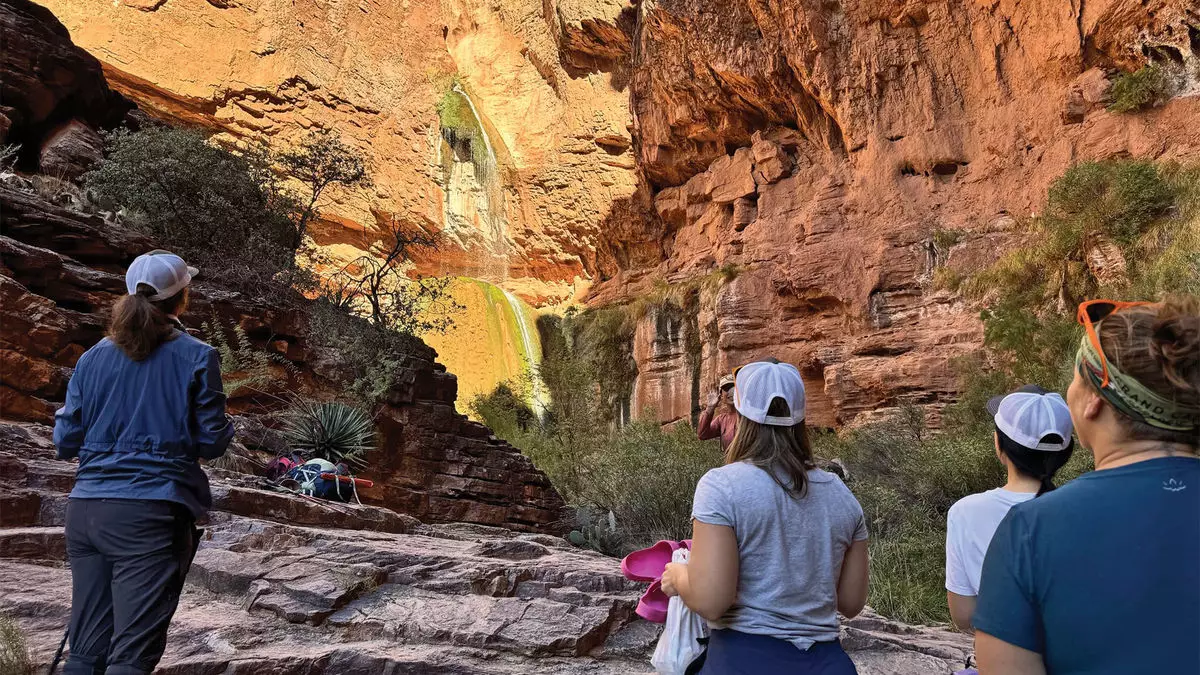The decision by the Trump administration to reduce the workforce of the National Park Service by laying off 1,000 employees has sent ripples of concern throughout the tourism sector, particularly as the peak summer season approaches. Tour operators, who rely heavily on access to national parks, have expressed trepidation over how these drastic workforce reductions could disrupt operations and diminish the quality of visitor experiences. Despite being assured by concession partners that services are intended to continue without interruption, early indications suggest that these layoffs are already affecting operations and visitor services across numerous parks.
The layoffs, initiated on February 14 as part of a broader effort to cut government spending, have ignited protests from park staff and advocates alike. An emblematic act of dissent occurred at Yosemite National Park, where protesters hung an American flag upside down, a traditional symbol of distress, from the top of El Capitan. This gesture highlights not only collective discontent but also a broader concern regarding what these cuts mean for the national parks, which are already struggling with underfunding and staffing shortages.
One significant concern is the ability of remaining staff to enforce regulations and maintain standards of park safety and cleanliness. Scott Cundy, co-founder of Wildland Trekking—an adventure travel company that operates numerous trips across national parks—voiced apprehension regarding delays in obtaining vital permits and licenses. This situation is further exacerbated by the uncertainty surrounding the federal hires of up to 7,700 seasonal workers, which may not fully offset the losses incurred by the layoffs.
The potential for operational disruptions is particularly distressing for tour operators like Catherine Prather, president of the National Tour Association, who noted that 80% of the association’s members facilitate national parks tours. Some operators have already begun to cancel itineraries for the upcoming summer season due to “extremely low bookings.” This drop in interest, at least partially attributable to anxiety surrounding the layoffs, could translate into significant financial losses—one operator could lose up to $1 million if cancellations continue.
Furthermore, the economic implications extend far beyond just the tour operators. Communities adjacent to national parks depend heavily on tourism, which, in 2023, generated an estimated $26.4 billion and supported approximately 415,000 jobs. A decline in park visitation could trigger a domino effect, stifling economic activity in these gateway communities and jeopardizing not just employment, but also the overall economic output of the region.
Early reports from various parks have confirmed operational changes that reflect the impact of these staff reductions. Yosemite has postponed its camping reservation rollout, while other parks, such as Carlsbad Caverns, have canceled guided tours and scaled back self-guided activities. Such modifications not only reduce the variety of available experiences for park visitors but also cultivate an atmosphere of uncertainty that may deter potential travelers from planning trips to these protected areas.
Companies providing tours, like Sunrise Tours, have already noted inquiries from concerned guests about the state of upcoming trips. While no cancellations have been made, the very act of considering alternatives indicates a growing unease among travelers. This sentiment is echoed by Caleb Lawson, the vice president of Sunrise Tours, who highlighted worries over longer wait times, facility cleanliness, and emergency response capabilities within the parks. His remarks further underscore that the operational shortfalls resulting from staff reductions may directly affect customer satisfaction and trip fulfillment.
Despite these substantial concerns, some tour operators are experiencing a degree of optimism. Conversations between operators like Tauck and lodging partners within the parks have alleviated some worries regarding the continuity of services. These discussions suggest that while the federal workforce cuts are significant, the involvement of private concessionaires might help to maintain some level of operational capacity. Stephanie Brooks, from the Globus family of brands, expressed preparedness to adapt itineraries as necessary, reflecting an industry poised to navigate the uncertain waters ahead.
Nevertheless, industry leaders like Jeremy Palmer advise caution and vigilance as these changes unfold, theorizing that the full impact of the layoffs could take time to manifest clearly. As anticipation builds for the summer travel season, the tourism sector watches closely, keenly aware that their success hinges on the health of America’s national parks—integral natural treasures and economic engines alike.
The coming months will reveal whether concerted efforts by park services and tour operators can mitigate the fallout from these layoffs or if visitor experiences—and by extension, local economies—will take a significant hit. As this situation evolves, it serves as a stark reminder of the interconnected nature of public policy, environmental stewardship, and economic vitality.

